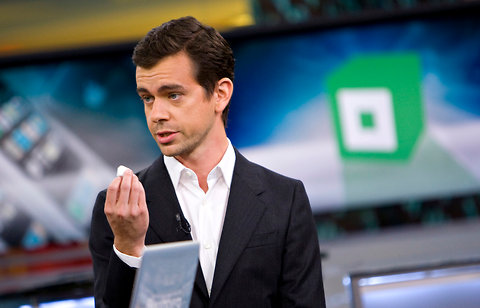 Jin Lee/Bloomberg NewsJack Dorsey, Square’s chief executive and co-founder, said the company’s offices are designed in an open-air environment to promote trust and transparency in employees.
Jin Lee/Bloomberg NewsJack Dorsey, Square’s chief executive and co-founder, said the company’s offices are designed in an open-air environment to promote trust and transparency in employees.
The headquarters of the start-up Square would be the absolute worst place to play hide-and-seek. There are no offices. Executives sit in open cubicles. All of the conference rooms, large and small, are surrounded by walls of clear glass. The only real place to hide, thankfully, would be the toilet.
This openness might seem odd given what Square does. It manages more than $2 billion a year in credit card transactions made through mobile phones. But the company is set up this way by Jack Dorsey, Square’s chief executive and co-founder, for a reason: to promote trust and transparency in its employees, which it hopes will translate to its customers. Design, he believes, has the power to determine a distinct mind-set, something he needs if Square is to succeed as a mobile payment system.
If Willy Wonka built a financial institution, instead of a chocolate factory, it would look something like Square. During an interview at the company’s San Francisco offices with Mr. Dorsey, we sat at a square table, in a square glass conference room — all of which are named after a famous town squares from around the world. Mr. Dorsey was eating nuts out of a square bowl. (Don’t worry, the nuts were still round, I checked.) Employees are even referred to as Squares.
“We believe strongly that the company is going to be reflected in the product and vice-versa,” Mr. Dorsey said. “The internal matches the external and the external matches the internal, and if we can’t provide a clean, simple, well-designed experience in here, it’s not going to be reflected in our identity. It’s in our DNA.” (Mr. Dorsey also is the chairman and co-founder of Twitter, where his obsession with openness is not as extreme.)
Square also borrows metaphors from traditional institutions, including the old United States Mint building, which sits across the street from the company’s office. “It looks like something that is built to last; it looks like it will stay up forever,” he said. “So how do you build that into pixels instead of stone?”
For centuries banks were built with thick stone walls, marble slab floors and heavy metal doors, all of which gave customers the feeling that bankers were dependable and trustworthy.
Square transactions primarily occur on a small plastic plug, inserted into a smartphone’s headphone jack, through which people swipe credit cards.
A hefty chunk of marble it is not. Square’s front door to customers is a smartphone application. Square has to provide the simplest experience possible, Mr. Dorsey believes, because, along with good design, it will evoke trust and confidence in a new financial institution that lives in a smartphone.
“We need to build something that never gets in the way of our users doing what they want to do,” he said. That concern is necessary because Square lacks the money to use mass media to show people how it works. When JPMorgan Chase introduced a new mobile feature that gave its banking customers the ability to deposit checks with their mobile phones, the financial behemoth spent millions of dollars on charming television and print ads of newlyweds in bed getting their wedding haul of checks into the bank.
Square has accrued a million customers just by word of mouth. That’s a tiny portion of all merchants accepting credit cards, so it still has a lot of work to do. “Traditionally in a financial institution, you have massive barriers to working together, you have a risk-averse culture and you have a lot of fear,” Mr. Dorsey said. “It’s rare for a financial institution to focus on design first.”
While the approach sounds very New Age-Touchy Feely-California, Silicon Valley companies have shown over and over again — think Apple, Google, Intuit — that clean and thoughtful design can win converts to a new way of doing things.
Article source: http://feeds.nytimes.com/click.phdo?i=db8aa325924893af76dc35486269a190